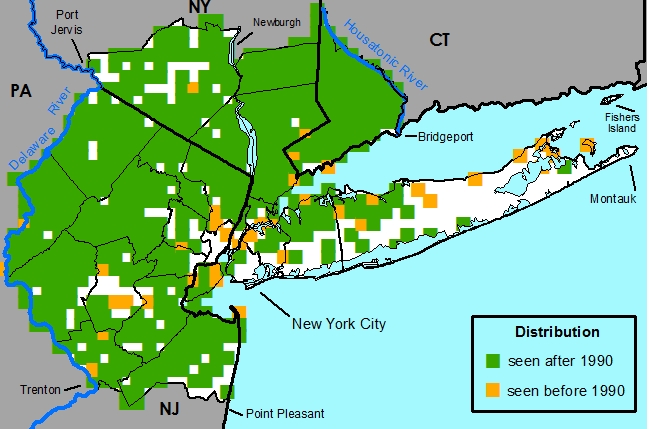Liriodendron tulipifera L. - Tulip Poplar,Tulip Tree,Yellow Poplar
Common Names
Tulip Poplar,Tulip Tree,Yellow PoplarField Identification
Large tree up to 60 m tall with furrowed bark, leaves green, long petiolate, with 4-6 lobes, mostly 4, the top 2 notched. Flowers solitary with 6 petals, white with orange blotches. Fruits cone-like with many dry tan samaras.Medicinal uses
Disclaimer: The information provided here is for reference and historical use. We do not recommend nor do we condone the use of this species for medicinal purposes without first consulting a physician.Tulip tree bark and the bark of its roots have been used extensively in traditional medicinal practices. The bark contains stimulant properties; tonics made from bark materials can be used as an effective diuretic and as a treatment for chronic rheumatism, gout and in advanced stages of dysentery. Powder made from the bark of the tree or the root was highly valued for curing the common cold.
Other uses
Tulip tree trucks have long been valued for commercial use and the bark for use in dying and tanning processes.Nomenclature
Liriodendron tulipifera L., Sp. Pl. 535 (1753).
Tulipifera liriodendron Miller, Gard. Dict. ed. 8 (1768).
Liriodendron procerum Salisbury, Prodr. Stirp. Chap. Allert. 379 (1797).
Liriodendron tulipifera a. acutiloba Michaux, Fl. Bor.Am. 1: 326 (526, err.) (1803).
Liriodendrum truncatifolium Stokes, Bot. Mat. Med. 3: 233 (1812).
Liriodendron tulipifera var. alba acutiloba Rafinesque, Fl. Med. 2: 239 (1830), nom.
Liriodendron tulipiftora St. Lager ex B. D. Jackson, Index Kew. 2: 96 (1895).
Description
PLANTS Perennial, deciduous, phanerophytic, trees, monoclinous, with adventitious roots, 1-60 m.STEMS Main stems ascending or erect, round. Prickles absent. Bark thick, dark grey or grey, deeply furrowed. Braches round and erect. Twigs grey to dark grey, reddish brown to brown. Twig 4-5 mm in diameter, not odorous. Twigs lenticellate, glabrous and eglandular. Pith present, white. Pith diaphragmed and chambered. Thorns absent.
BUDS Terminal only, 1.5-2 cm, flattened. Buds scales present-2, valvate, fused at the margin. Leaf scars many, round to oval. Vascular bundle scars 4-6, round and punctuate. Stipular scars present, encircling the stem.
LEAVES Alternate, simple, spaced somewhat evenly along the stems, divergent. Lateral stipules present, stipules paired, light green to green, elliptic, sometimes oblanceolate, margins entire. Pinnate venation with 10-12 pairs of secondary veins. Leaves petiolate. Petioles 5.5-11.5 mm. Petiole terete, glabrous and eglandular. Leaf blades: Abaxial surfaces lustrous and bright green to green or dark green, glabrous and eglandular. Adaxial surfaces glaucous, glabrous or with a few stiff white hairs growing along the veins, eglandular. Blades 7.5-15 cm long and 12.5-18.5 cm wide. Leaf lobes 4-6, mostly 4. Leaf bases cordate or truncate, apices broadly truncate or notched.
INFLORESCENCE Bisexual, simple, consisting of a single flower. Peduncle absent.
FLOWERS Coetaneous, bisexual, perfect. Spathe-like bracts present-1, brown to dark orange red or dark reddish orange and notched. 1 flower per inflorescence. Flowers with perianth parts distinguishable from one another, sepals 3, reflexed, pale green, corolla campanulate, petals 4-5 cm long, greenish yellow with abaxial orange notch, outermost whorl green and sepaloid. Stamens many 20-50, anthers extrorse; filaments white; receptacle elongate, pistils 60-100. Flowers delicately scented.
FRUITS Dry samaracetum with many 1-2 seeded samaras, fruits deciduous, narrow, elongate, tan to dark yellowish orange, dark yellow orange or dark yellow, eventually turning brown in late fall. Surfaces glaborous and eglandular.
SEEDS Tan to dark yellowish orange, dark yellow orange or dark yellow, lustrous and shiny, round to oval, oblong. Surfaces glabrous and eglandular. 1-2 mm x 1-2 mm.
Habitat
Found in well-drained soils of woodlands, hills, lower slopes, concave slopes and forest coves.Distribution
United States – AL, AR, CT, DC, DE, FL, GA, IA, IL, IN, KY, LA, MA, MD, ME, MI, MO, MS, NC, NJ, NY, OH, PA, RI, SC, TN, TX, VA, VT, WI, WV.Canada – ON
New York Metropolitan Region – Found in all 25 NYMF counties.
Rarity Status
Heritage global rank G4Connecticut- Not Listed
New Jersey – Not Listed
New York - Not Listed
Species Biology
FloweringMay [week 4] – June [week 4]
Fruiting
June [week 2] – October [week 2]
Pollination
Insect pollination mainly by beetle and bees.
Dispersal
Wind dispersed.
Germination
Cold stratification for 60-90 required to break dormancy.
